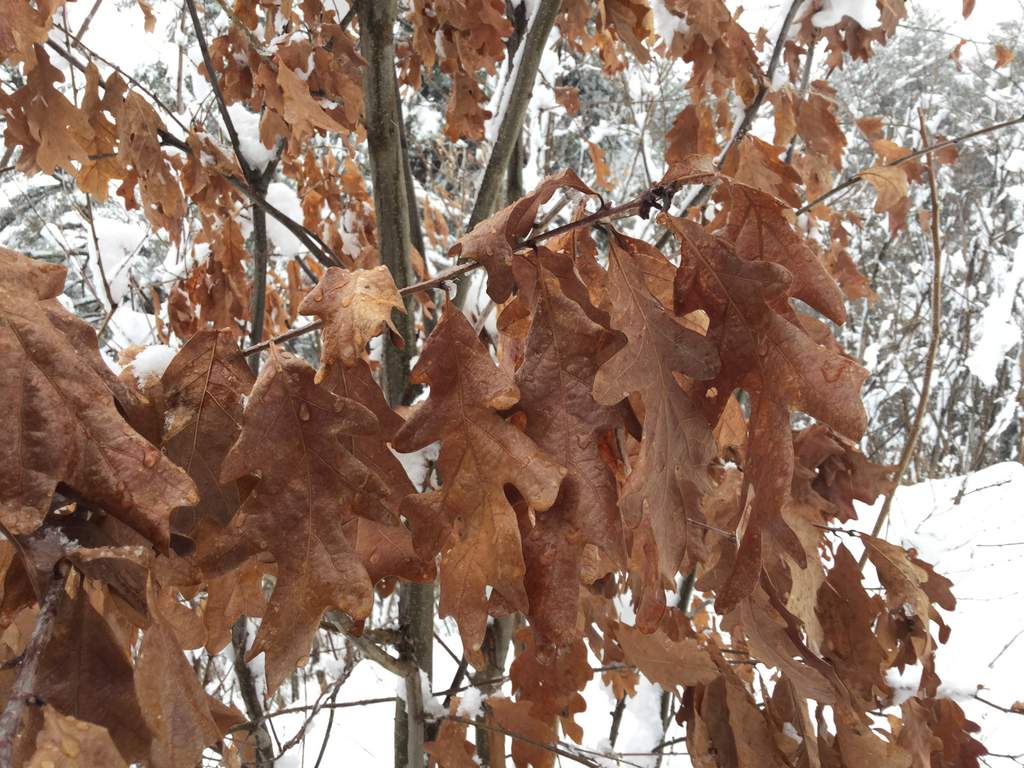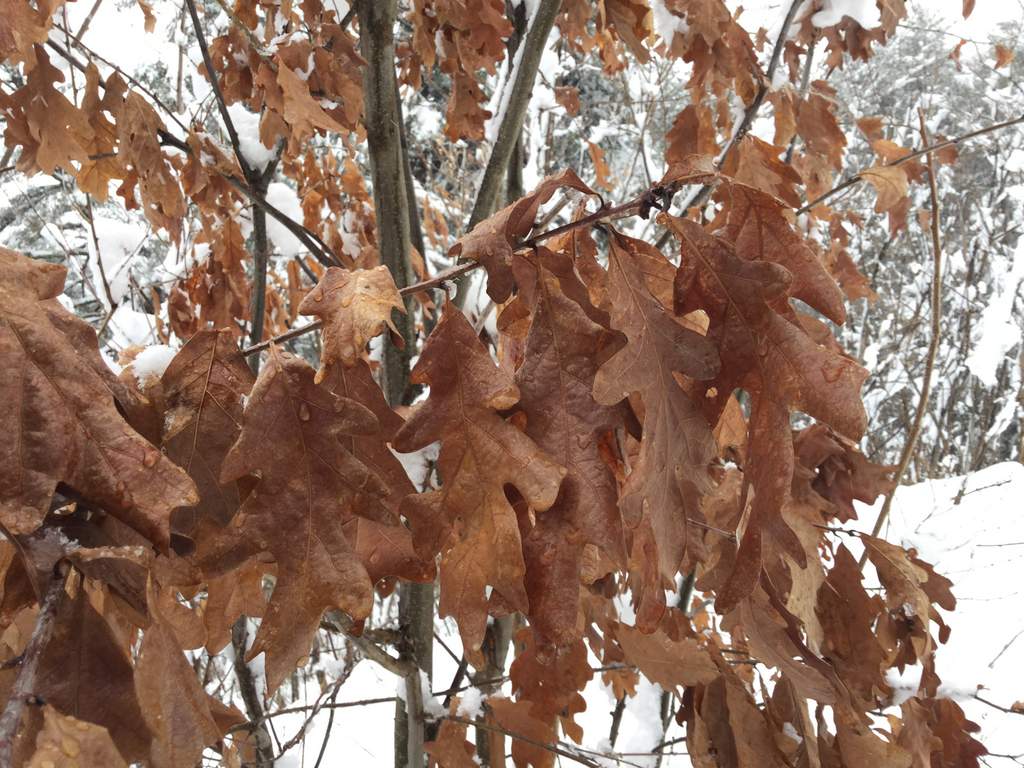
Marcescent white oak retaining leaves into the beginnings of spring. Warm temps will reactivate twigs which will then drop the leaves (Centennial Woods, Burlington)
Marcescence in oaks
I previously wrote about phelloderm and the advantages of having photosynthetic bark. Phelloderm allows trees to play it on the safe side and drop their leaves well before the first hard frost, but still take advantage of subsequent warm, sunny fall days to generate sugars. A few trees, however, aren’t so good at gambling and each year their leaves get killed by frost before the tree can shed them.

Marcescent leaves on red oak torn off by end of winter leaving frayed petioles (Rock Point)
Quick note on how trees lose leaves
Losing a leaf is an active process. When cued by changing day lengths and colder temperatures, a twig begins to create an abscission layer where the leaf petiole attaches to the twig. The twig begins corking over cells on the twig side, while other cells secrete enzymes that digest away the middle lamella (the glue between cells that helps holds them together). Eventually the leaf loses its grip and is cast off on the winds. A waterproof leaf scar is all that’s left. This whole process allows the tree to recoup some of the energy it invested in the construction of the leaf and to prevent from winds ripping off the leaf during the winter, which would expose the tree to infection (like getting a scab ripped off prematurely).
Marcescence
If the process of shedding leaves begins too late (or if a really sharp frost occurs early as it did in 2017) then a leaf can die while still attached to the leaf and the twig won’t complete the abscission process. Trees that do this regularly – like oaks, beeches, and witch-hazel – are easy to spot in the winter as they’re the only hardwoods with brown crunchy leaves bristling in the wind in a sea of barren sticks. I had always vaguely wondered what happened to all those brown leaves after the new leaves emerge in the spring, but hadn’t put much thought into it.

Marcescent white oak retaining leaves into the beginnings of spring. Warm temps will reactivate twigs which will then drop the leaves (Centennial Woods, Burlington)
An experiment
I assumed that the twig just picked up where it left off in the spring, but I wanted to see for sure. So a couple weeks ago I went out I cut a couple of marcescent white oak twigs. I put one twig in a cup with water to keep it alive and another in a cup without water.

Experimental setup: white oak twig on left is in submerged in water, while the one on the right is exposed to the air.
Results: After 5 days the first leaf fell off the twig in water. Over the next week several more leaves fell off. This indicates that the process is indeed controlled by the twig. If leaves were responsible for creating the abscission layer then the process shouldn’t resume once temperatures warm above freezing since the leaves would still clearly be dead. But the process did resume so it must be that the twig goes dormant before the process is completed and in the spring, once temperatures warm again, the process continues and the leaves are all shed before the buds burst.

Freshly exposed leaf scar on white oak from marcescent leaf experiment (Burlington)

Freshly exposed leaf scar on white oak from marcescent leaf experiment (Burlington)



